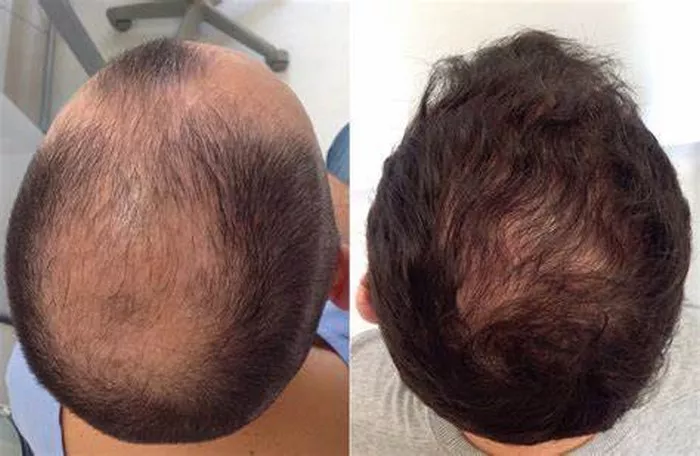Hair transplant procedures have become increasingly popular as effective solutions for hair loss. If you’re considering or have recently undergone a hair transplant, you might wonder about various aspects of post-operative care, including whether it’s safe to shave your hair afterward. In this article, we will delve into the implications of shaving after a hair transplant, best practices, and essential tips for ensuring the health and success of your new hair.
Understanding Hair Transplants
What Is a Hair Transplant?
A hair transplant is a surgical procedure that involves relocating hair follicles from a donor area (typically the back of the scalp) to areas experiencing hair loss. There are two main techniques for hair transplantation:
Follicular Unit Transplantation (FUT): In this method, a strip of scalp is removed from the donor area, and individual hair follicles are then extracted and transplanted to the recipient area.
Follicular Unit Extraction (FUE): This technique involves extracting individual hair follicles directly from the donor area using a specialized tool, making it less invasive and leaving minimal scarring.
Recovery After a Hair Transplant
Post-operative care is crucial for the success of a hair transplant. After the procedure, the scalp may be sensitive, and it’s essential to follow your surgeon’s recommendations for recovery, which typically include:
Avoiding strenuous activities for a specified period.
Not exposing the scalp to direct sunlight.
Keeping the scalp clean and moisturized.
Avoiding tight hats or headgear that could irritate the transplanted area.
See Also: When to Start Finasteride After a Hair Transplant?
The Question of Shaving
When Can You Shave After a Hair Transplant?
The timeline for shaving after a hair transplant can vary depending on several factors, including the technique used, individual healing rates, and your surgeon’s specific recommendations. Here are some general guidelines to consider:
Immediate Post-Operative Period: For the first few days (usually around 7-10 days), it’s crucial to avoid any form of shaving or cutting hair. The transplanted follicles need time to settle in and begin healing without any disturbance.
After 10-14 Days: Once the initial healing phase is complete, you can begin to consider shaving, but caution is essential. At this point, the scabs that form on the scalp after the procedure should have fallen off, and the sensitivity may have decreased.
Full Growth: It’s often recommended to wait at least a month or two before shaving your hair down to a very short length, as the new hair follicles will still be in the early stages of growth and development.
Different Methods of Shaving
Once you’re cleared to shave, the method you choose can impact the health of your newly transplanted hair:
Electric Razors: Using an electric razor can be a safer option, as it’s less likely to cause irritation to the scalp. Ensure that the blades are clean and sharp for the best results.
Manual Razors: If you opt for a manual razor, use a very gentle touch to avoid nicking the scalp or disturbing the transplanted follicles.
Clippers: Clippers can also be a good choice, allowing you to control the length of your hair while minimizing irritation.
Important Considerations
Follow Your Surgeon’s Advice
Always prioritize the advice of your hair transplant surgeon regarding post-operative care and when to shave your hair. Every patient’s healing process is unique, and your surgeon will provide tailored guidance based on your individual situation.
Be Gentle
When you do start shaving, be gentle with your scalp. Avoid applying too much pressure, and take your time to prevent any accidental nicks or cuts that could affect the transplanted hair.
Monitor for Irritation
After shaving, monitor your scalp for any signs of irritation, redness, or discomfort. If you notice any unusual changes, contact your surgeon immediately for advice.
Consider the Length of Hair
Before shaving, consider how short you want your hair. Keep in mind that the new hair follicles will take time to grow, and shaving too close to the scalp may make the hair appear thinner than it is.
The Benefits of Shaving After a Hair Transplant
Shaving your hair after a hair transplant can offer several benefits:
Ease of Maintenance: Shorter hair can be easier to manage, especially during the healing process when the scalp may be sensitive.
Even Growth: Shaving can help ensure even growth of the new hair, as it allows for a more uniform appearance.
Aesthetic Choice: Many individuals prefer a shorter hairstyle, which can enhance their overall look and confidence.
Final Thoughts
In summary, shaving your hair after a hair transplant is possible, but it requires careful consideration and adherence to your surgeon’s guidelines. The general recommendation is to wait at least 10-14 days before attempting to shave, allowing your scalp time to heal properly. When you do decide to shave, choose a gentle method, be mindful of the newly transplanted follicles, and prioritize the health of your scalp.
Ultimately, the success of a hair transplant relies not only on the surgical technique but also on the post-operative care and decisions made during the recovery process. By understanding the nuances of shaving after a hair transplant, you can help ensure the best possible results for your new hair.
You Might Be Interested In
- When Can I Wear a Helmet After a Hair Transplant?
- When Can You Eat Non-Vegetarian Foods After a Hair Transplant?
- When Can I Start Sweating After a Hair Transplant?


